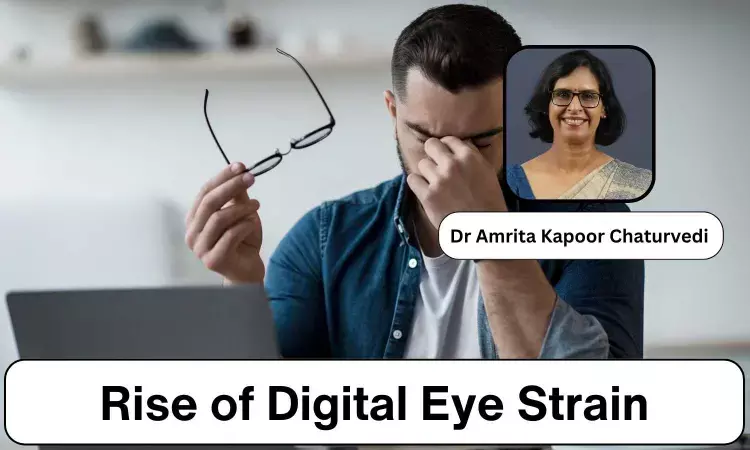- Home
- Medical news & Guidelines
- Anesthesiology
- Cardiology and CTVS
- Critical Care
- Dentistry
- Dermatology
- Diabetes and Endocrinology
- ENT
- Gastroenterology
- Medicine
- Nephrology
- Neurology
- Obstretics-Gynaecology
- Oncology
- Ophthalmology
- Orthopaedics
- Pediatrics-Neonatology
- Psychiatry
- Pulmonology
- Radiology
- Surgery
- Urology
- Laboratory Medicine
- Diet
- Nursing
- Paramedical
- Physiotherapy
- Health news
- Fact Check
- Bone Health Fact Check
- Brain Health Fact Check
- Cancer Related Fact Check
- Child Care Fact Check
- Dental and oral health fact check
- Diabetes and metabolic health fact check
- Diet and Nutrition Fact Check
- Eye and ENT Care Fact Check
- Fitness fact check
- Gut health fact check
- Heart health fact check
- Kidney health fact check
- Medical education fact check
- Men's health fact check
- Respiratory fact check
- Skin and hair care fact check
- Vaccine and Immunization fact check
- Women's health fact check
- AYUSH
- State News
- Andaman and Nicobar Islands
- Andhra Pradesh
- Arunachal Pradesh
- Assam
- Bihar
- Chandigarh
- Chattisgarh
- Dadra and Nagar Haveli
- Daman and Diu
- Delhi
- Goa
- Gujarat
- Haryana
- Himachal Pradesh
- Jammu & Kashmir
- Jharkhand
- Karnataka
- Kerala
- Ladakh
- Lakshadweep
- Madhya Pradesh
- Maharashtra
- Manipur
- Meghalaya
- Mizoram
- Nagaland
- Odisha
- Puducherry
- Punjab
- Rajasthan
- Sikkim
- Tamil Nadu
- Telangana
- Tripura
- Uttar Pradesh
- Uttrakhand
- West Bengal
- Medical Education
- Industry
Rise of Digital Eye Strain: Understanding and Combating Computer Vision Syndrome - Dr Amrita Kapoor Chaturvedi

Digital eye strain is becoming an increasingly common condition. Also known as computer vision syndrome, it results from using computers or other digital devices for prolonged periods of time. It can affect the quality of life by causing eye irritation, blurred vision and frequent headaches.
The prevalence of this condition has greatly increased during and after the COVID pandemic, as more people now rely on digital devices for work and socializing. More children also experience computer vision syndrome because of online schooling. Internet addiction among the youth has been on the rise, affecting their eye health among other health problems.
Looking at digital screens requires constant refocusing and constant moving of eyes. The screen also adds contrast, flicker and glare. This causes a lot of strain on eye muscles.
Normally, the rate at which the eyes blink is 18 to 22 times per minute. Blinking resurfaces the cornea with a fresh tear film, which keeps the eyes lubricated. Most individuals have an average blinking frequency rate of 3–7 times per minute, while looking at a computer screen. Infrequent and incomplete blinking causes the surface of the eyes to dry out. This causes discomfort in the eyes and blurred vision.
Using digital devices for four hours or more/day, viewing the computer screen or digital device at the wrong angle or keeping the screen (mobile) too close to the eyes causes eye strain.
People who need glasses but do not wear them regularly are also more prone to developing computer vision syndrome.
Computer vision syndrome treatment involves:
● Change of routine and environment
● Managing dry eye.
● Correction of vision problems
Small changes in routine and environment go a long way in improving the comfort of the eyes. Reducing the screen time may not be possible for many as most jobs involve long hours of computer usage. Taking frequent breaks is recommended, e.g, following the 20-20-20 method.
This involves looking at something at least 20 feet away for about 20 seconds, every 20 minutes. It is also important to set up an ergonomic workstation to avoid bending forward or stretching the neck.
Glare should be minimised by adjusting the room lighting to avoid any direct lighting to the screen. Glare takes place when the screen in use reflects the lights from its surroundings. By closing window blinds, shades, or curtains, dimming overhead lights and adding screen glare filters to the monitor, glare can be reduced significantly.
Screen brightness and contrast should be adjusted depending on the time of day. A screen contrast of around 60% to 70% should feel comfortable on the eyes. Font size should be kept large while reading on screen
Artificial tears and other lubricating drops should be used regularly to add moisture to the tear film and prevention of dry eye.
One should consciously blink during screen work. People may not realize how much they are staring at the screen without blinking until they are aware it is a problem. Making an effort to blink more can help natural tears soothe an individual’s eyes.
Regular eye checkups and wearing of prescribed glasses is necessary as refractive errors, even minor ones, can worsen symptoms of computer vision syndrome.
Even though people may use gadgets for their usage in work, networking, or leisure activities, it is also crucial to do so with regular intervals. Taking care of the eyes while using screens significantly reduces symptoms of eye strain.
Dr Amrita Kapoor Chaturvedi MBBS, MD (Ophthalmology), FRCS is a Senior Consultant & Assistant Professor (Department of Ophthalmology) at Amrita Hospital, Faridabad having over 28 years of experience in the field of Ophthalmology. She specialises in Glaucoma, Paediatric Ophthalmology and Squint, Neuro-ophthalmology, Cataract and Refractive surgery.


